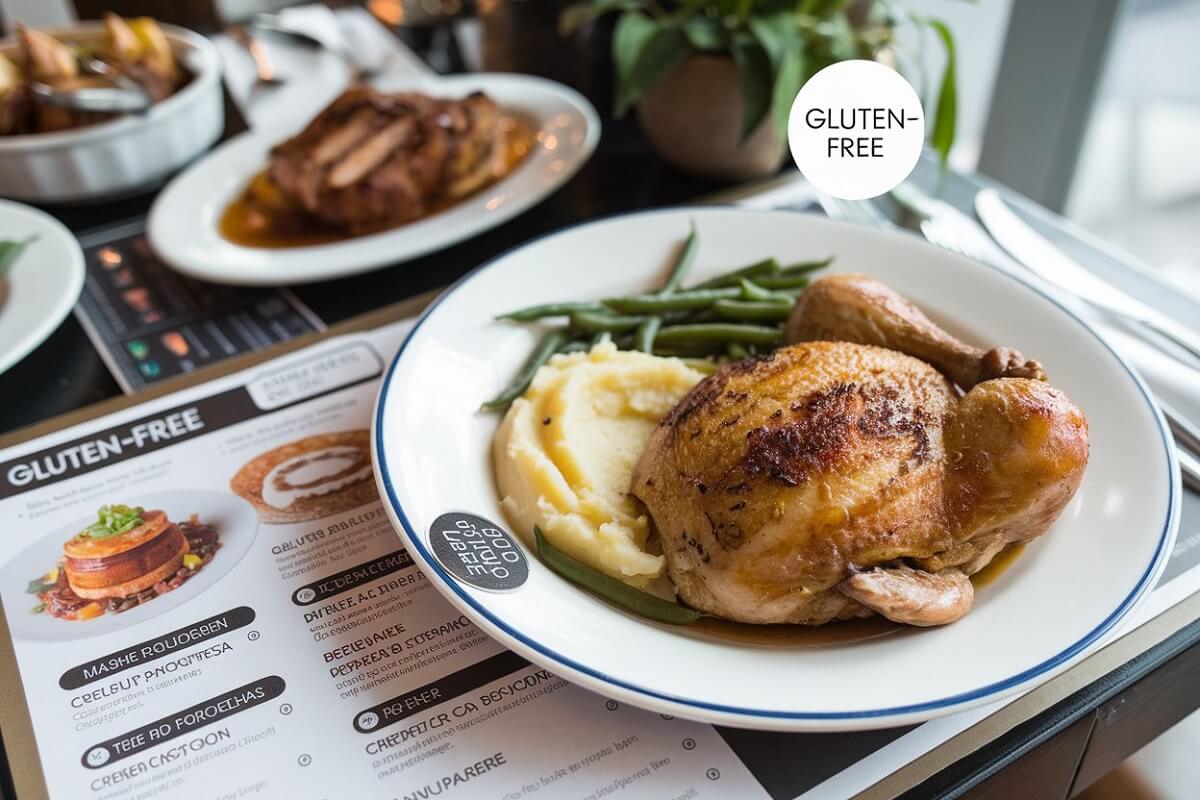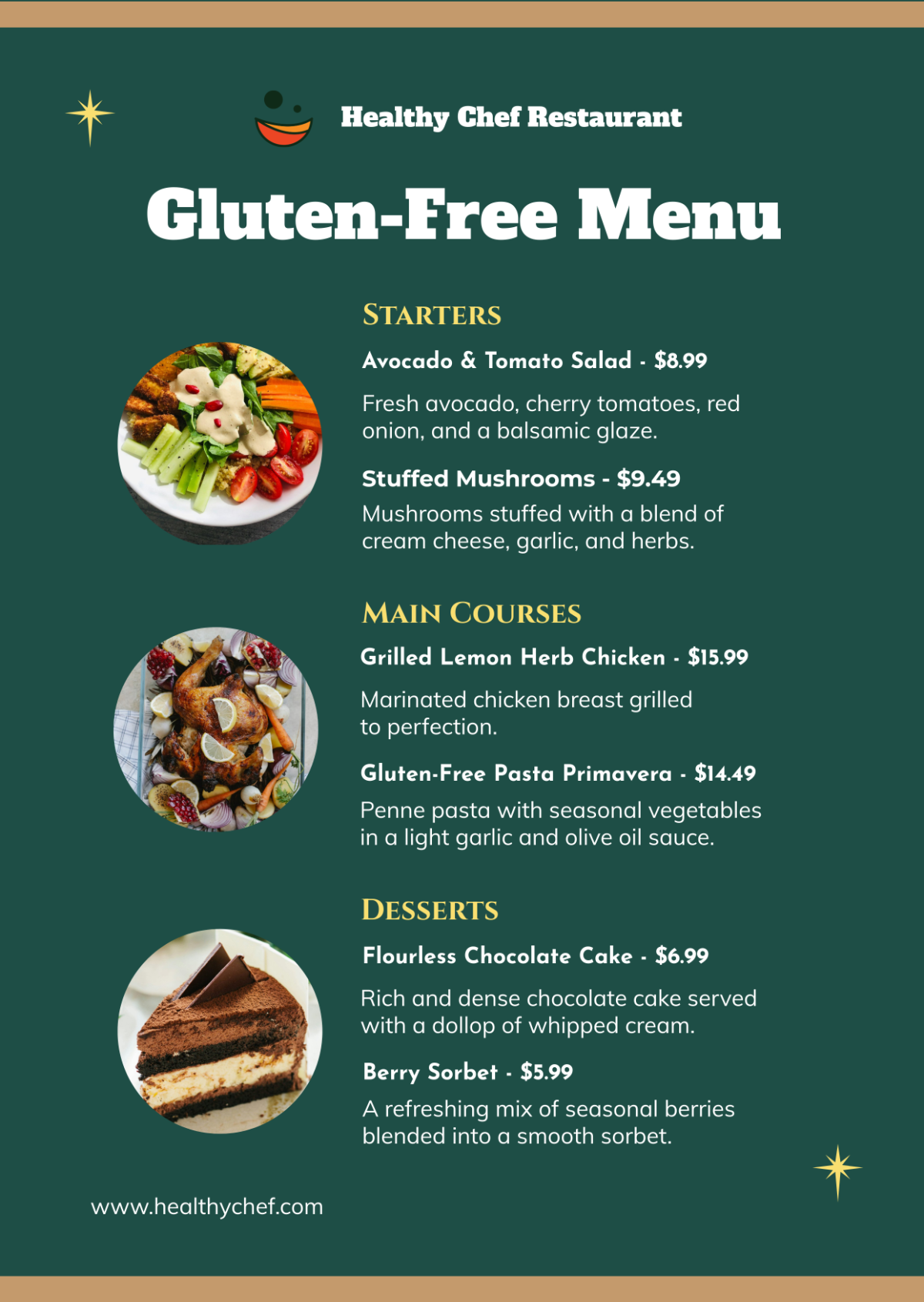Gluten-Free Dining Out: A Comprehensive Guide to Safe Eating at Restaurants
Navigating Menus, Communicating Needs, and Enjoying a Worry-Free Meal

Dining out while adhering to a gluten free diet can feel like navigating a minefield. Cross-contamination, hidden ingredients, and misunderstandings can quickly turn a pleasant evening into a source of anxiety. However, with careful planning, informed communication, and a little know-how, you can confidently enjoy delicious meals at restaurants without compromising your health or well-being. This comprehensive guide provides you with the tools and strategies you need to dine out safely and enjoyably while following a gluten free diet.
- Preparing to Dine Out
- Restaurant Selection: Choosing Wisely
- Communication is Key: Talking to Restaurant Staff
- Navigating the Menu: Identifying Gluten-Free Options
- Understanding Cross-Contamination and How to Avoid It
- What to Do If You Get Glutened
- Finding Gluten Free Food Near Me: Resources and Tools
Preparing to Dine Out

Before stepping foot in a restaurant, a little preparation can go a long way. If you suffer from gluten free intolerance, celiac, or experience gluten allergy symptoms, proactive planning is essential. Start by researching menus online. Many restaurants now offer online menus that clearly indicate gluten-free options. This allows you to pre-screen establishments and identify those that cater to your dietary needs. It's also a good idea to carry a chef card, a small card that clearly outlines your dietary restrictions and the importance of avoiding gluten. This can be especially helpful when language barriers exist or when explaining complex needs. Consider calling the restaurant in advance to inquire about their gluten-free policies and procedures. Ask specific questions about their cross-contamination protocols, ingredient sourcing, and chef's knowledge of gluten free diet requirements. Finally, be realistic about your expectations. Not every restaurant will be able to accommodate your needs perfectly. Choose establishments that demonstrate a willingness to work with you and prioritize your health.
Restaurant Selection: Choosing Wisely

When choosing a restaurant, consider factors beyond just the menu. Restaurants with dedicated gluten-free kitchens or separate preparation areas are ideal, as they minimize the risk of cross-contamination. Ethnic cuisines like Thai, Vietnamese, and Mexican (with corn tortillas) often have naturally gluten-free options, but be cautious of sauces and marinades that may contain hidden gluten. Italian restaurants can be trickier, but many now offer gluten-free pasta and pizza crusts. When in doubt, choose simpler dishes with fewer ingredients, as this reduces the chances of encountering hidden gluten. Read online reviews and look for feedback from other diners with celiac or gluten free intolerance. Their experiences can provide valuable insights into a restaurant's ability to handle gluten-free requests. Consider smaller, locally owned restaurants, as they are often more accommodating and willing to customize dishes to meet your needs. Chain restaurants can be inconsistent, so it's important to do your research and read reviews specific to the location you plan to visit.
Communication is Key: Talking to Restaurant Staff

Clear and concise communication is paramount when dining out on a gluten free diet. When you arrive at the restaurant, immediately inform your server that you require a gluten-free meal due to celiac disease or gluten intolerance. Be specific about your needs and don't assume that the staff understands the nuances of a gluten free diet. Ask questions about how dishes are prepared, what ingredients are used, and whether there are any potential sources of cross-contamination. Don't hesitate to ask for clarification if you are unsure about anything. If possible, speak directly to the manager or chef. They are often more knowledgeable about the restaurant's gluten-free policies and can address your concerns more effectively. Be polite and patient, but also firm in your requests. Remember that you are responsible for your own health, so it's important to advocate for yourself. Emphasize the medical necessity of avoiding gluten, rather than simply stating a preference.
Understanding Cross-Contamination and How to Avoid It
Cross-contamination occurs when gluten-free foods come into contact with gluten-containing foods. This can happen in the kitchen during preparation, cooking, or serving. To minimize the risk of cross-contamination, choose restaurants that have dedicated gluten-free kitchens or separate preparation areas. When ordering, request that your food be prepared with clean utensils and on a clean surface. Ask the staff to change their gloves before handling your food. Be especially cautious of shared fryers, as they are a common source of cross-contamination. Request that your food be baked, grilled, or steamed instead of fried. Avoid dishes that are served with communal dipping sauces or condiments, as they may have been contaminated by other diners. If you are unsure about the restaurant's cross-contamination protocols, it's best to err on the side of caution and choose a different dish or restaurant.
What to Do If You Get Glutened
Despite your best efforts, you may occasionally get glutened while dining out. Gluten allergy symptoms can vary depending on the individual, but common symptoms include abdominal pain, bloating, diarrhea, nausea, and fatigue. If you suspect that you have been glutened, it's important to take action immediately. Inform the restaurant staff and let them know that you are experiencing a reaction. Drink plenty of water to help flush out your system. Consider taking an over-the-counter anti-inflammatory medication to relieve symptoms. Rest and avoid strenuous activity. If your symptoms are severe or persistent, seek medical attention. In the future, use this experience to inform your restaurant choices and communication strategies. Note what you ordered and what steps you took to avoid gluten, so you can learn from the experience and prevent it from happening again.
Finding Gluten Free Food Near Me: Resources and Tools
Finding restaurants that cater to a gluten free diet has become easier with the proliferation of online resources and apps. Many websites and apps allow you to search for gluten free food near me, providing reviews, ratings, and menus from other diners with celiac or gluten free intolerance. Popular resources include Find Me Gluten Free, Gluten Free Registry, and the Celiac Disease Foundation website. Social media groups and online forums dedicated to gluten-free living can also be valuable sources of information and recommendations. Don't be afraid to ask for recommendations from friends, family, or your healthcare provider. They may have firsthand experience with restaurants in your area that are knowledgeable about gluten free diet requirements. Finally, remember to support restaurants that are committed to providing safe and delicious gluten-free options. Your patronage helps to encourage other establishments to cater to the needs of the gluten-free community.
Enjoying a Gluten-Free Dining Experience
Dining out on a gluten free diet requires careful planning and proactive communication, but it doesn't have to be a stressful experience. By following the tips and strategies outlined in this guide, you can confidently navigate menus, communicate your needs, and enjoy delicious meals at restaurants without compromising your health or well-being. Remember to research restaurants in advance, communicate clearly with the staff, and be vigilant about cross-contamination. With a little preparation and know-how, you can continue to savor the pleasures of dining out while maintaining a healthy and satisfying gluten free diet.
